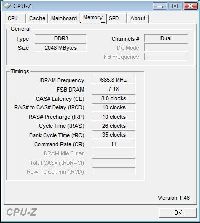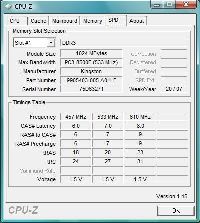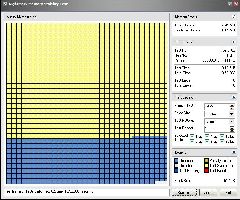|
Kingston HyperX 2GB DDR3-1375 RAM kit
Test Rig:
We Installed the Kingston KHX11000D3LLK2/2G into a computer with the following components:
- Thermaltake Kandalf LCS case
- ASUS Striker II NSE motherboard
- Intel Core 2 Quad E6700
- Western Digital 80GB SATA HDD
- ATI Radeon HD 3870
- Tagan BZ900 900W PSU
Installation:
Installation of the RAM was quite easy. Like any other RAM, simply unlock the DIMMs, orient the RAM properly, and push the stick into the DIMM slot until the sides lock it in place. The FSB for this motherboard was 1066, so the RAM started out at 1066MHz. This is unacceptable, so we went into the BIOS, unlinked the RAM, and set it to 1375MHz. The actual operating frequency was 1371.8MHz. We'll get on to the overclocked frequencies later on.
(Click thumbnail to enlarge)
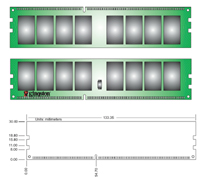 |
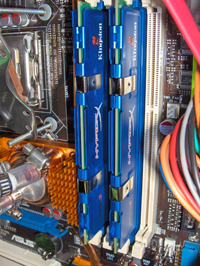 |
Preliminary Testing:
CPU-Z:
(Click thumbnails to enlarge)
CPU-Z Memory @ 1375MHz |
CPU-Z SPD @ 1375MHz |
CPU-Z was run on the RAM to establish a baseline of data. We see from the image on the left that the RAM is running at 685.9MHz, so 685.9 x 2 = 1371.8MHz. We also see that our timings are 8-10-10-26. This does not correspond to our 7-7-7-20 as seen on the previous page, but those timings agree when the RAM is run at 1066MH, a bit decieving. The top section of the Memory picture shows us we have 2GB of DDR3 RAM in dual channel. Moving on to the picture on our right, we can see the approximated timings with relation to speed. The highest it shows is 610Mhz, which is strange since we're running our Kingston DDR3-1375 kit higher than that already.
RightMark Memory Stability:
The RightMark Memory Stability test was used before any benchmarking to make sure that our RAM was 100% perfect. The total test took 10 minutes, 53 seconds, and verified that there were 0 test errors. This showed that our HyperX memory was ready for benchmarking.
Real Time Pricing:







